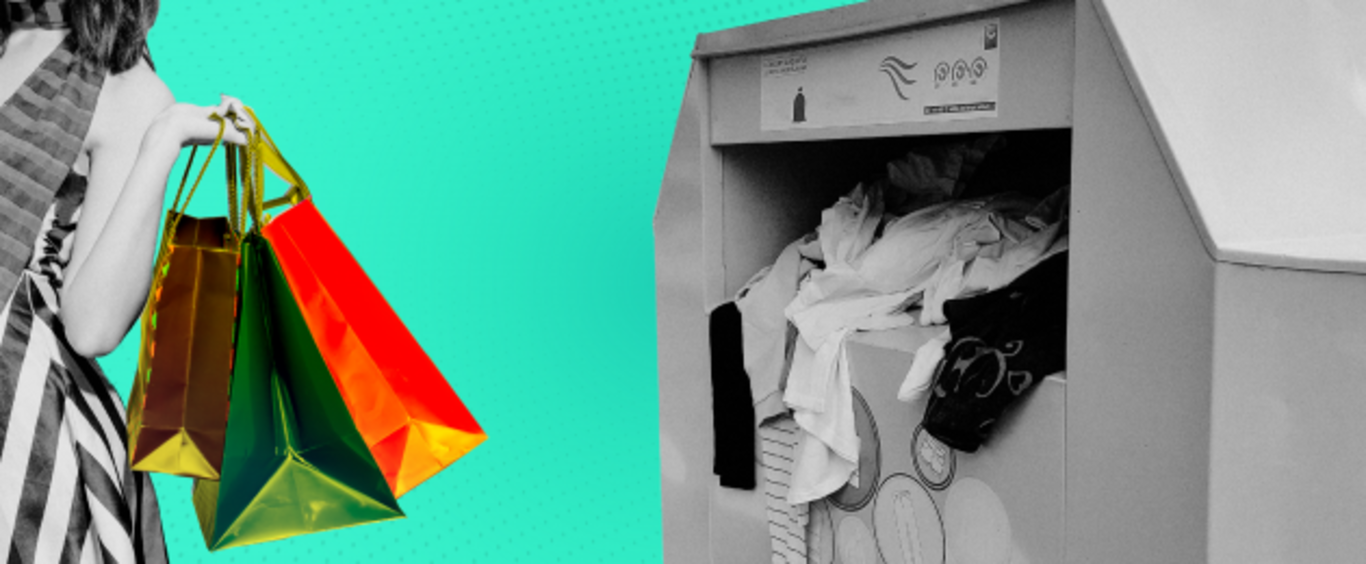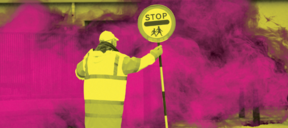Serial clothes shoppers to be targeted in new sustainability campaign
High frequency shoppers who buy clothes several times a week will be encouraged to reduce their consumption.

IN A BID to end the unsustainable buying habits of serial shoppers, the government is to launch a public campaign in 2024 targeted particularly at those who buy clothes several times a week.
These so-called ‘high frequency purchasers’ will be encouraged to reduce their consumption of clothes and to adopt more sustainable behaviours.
Over a fifth of Irish people buy clothes several times a week and half of those report buying items they never wear, according to Environmental Protection Agency (EPA) data.
They love browsing the latest trends and don’t find clothes shopping a chore. Most are women but 35% are men. The women tend to be under 50 and the men under 34-years-old.
You’re sure to see many of them hitting the shops today because these fashionistas are more influenced by sales than anything else – more than friends, family or social media.
Maybe you’ll see a high frequency purchaser looking back at you in the changing room mirror.
“In terms of individual purchasers, [serial shoppers] might be the best representative of the consumer culture that we have,” Solene Schirrer, textile waste campaign lead from the environmental NGO VOICE, told Noteworthy.
“It’s not like those people are bad,” she said, it’s a reflection of what consumers are being offered – they’ve been taught to see clothes as disposable.
“It shows that there’s a clear lack of value put on the clothes, and that people don’t get the link between the clothes and the resources it takes to make them.”
This suits companies who want us to keep buying.
 Shoppers on Grafton Street on St Stephen's Day in 2020 just before non-essential retail was shut at the end of December.
Shoppers on Grafton Street on St Stephen's Day in 2020 just before non-essential retail was shut at the end of December.
Noteworthy, the crowdfunded community-led investigative platform from The Journal, supports independent and impactful public interest journalism.
Textile consumption volume ‘a problem’
Ireland is one of the biggest consumers and disposers of textiles in the EU. We consume 53 kg per person per year and throw away 35 kg, compared to the European average of 26 kg and 12 kg.
The industry needs to change but at the same time, so do individual buying patterns, says Schirrer. High consumption needs to be “a bit less socially acceptable” at an individual level.
Though they buy a lot of clothes, high frequency shoppers tend to be more likely to look out for ethical, sustainably-sourced and locally-produced clothes. But even if these shoppers are more conscious of what they buy, is the amount they buy undoing all their potential good? We asked Schirrer.
“The problem is the volume,” she said.
Around 110,000 tonnes of textiles in Ireland end up in waste-to-energy plants or landfill each year.
Recycling isn’t the answer. Only 1% of clothes globally are recycled into new clothing, according to Schirrer. Often what is meant as recycling is really downcycling: using old clothing fibres as housing insulation, for example.
“Yes, buy better, but also buy less,” she said, adding, “there’s still confusion over what is really sustainable”.
Sustainability or greenwashing?
It’s difficult for consumers to know how to assess brands’ sustainability claims.
Recycled polyester, for example, tends to come from plastic bottles. What’s the problem with that, we asked – isn’t it all recycling?
This ‘open loop’ recycling, where resources from one industry are used in another, might be better than nothing.
But the problem is that we still have all these waste textiles that we can’t deal with and so that recycled polyester is likely to end up in landfill, just a bit later than it might have. Plus it gives industry “an out” to keep using virgin (non-recycled) material and our consumption grows, says Schirrer.
Much better would be ‘closed loop’ recycling.
It’s the idea of circularity where [we] reuse the same products for the same purposes so that… you don’t use as many virgin resources.
VOICE Ireland are working on a website, to be launched next year, where consumers will be able verify sustainability claims. The EU is also working on a ‘greenwashing’ directive which will make it harder for companies to make vague or misleading claims.
In the meantime, Schirrer says, look for certifications and try to buy pure, natural fibres such as cotton or wool.
Pure because current technology is unable to separate mixed fabrics such as stretch jeans which are a cotton-elastane mix. Natural because, she says, they are easier to turn into new textiles and “in the worst case scenario” are compostable.
Data to inform policy and interventions
The data on high frequency purchasers comes from a National Textiles Survey carried out by the EPA in 2021 but published this year.
The survey and the 2024 awareness campaign are all part of the government’s green ambitions to move Ireland towards a circular economy in which products are kept in circulation as long as possible through reuse, repair and recycling.
“Textiles is a priority policy area,” said a spokesperson for the Department of the Environment, Climate and Communications, because it wants “to tackle the environmental degradation caused by this material stream and in realising its circular economy ambitions.”
 Textile waste is a major global polluter.
Textile waste is a major global polluter.
To this end, the Department established a Textile Advisory Group in 2022. It had its third meeting at the end of November with a progress report due in early 2024.
The group is involved in the publicity campaign and has committed to publishing a National Policy Statement on Textiles, and to explore extending a producer responsibility scheme for textiles, although no date for those is set.
What’s an ethical fashionista to do?
Even though they purchase more, frequent shoppers are also more likely to engage in some behaviour that is compatible with textile sustainability.
30% are willing to rent clothes compared to 24% of other consumers and 28% have bought second-hand clothing in the past 12 months compared to 17%.
Schirrer says all these are great options for a fashion-conscious shopper.
And for those who love the thrill of the hunt, Stephen’s Day sales can scratch that itch, too, if approached more sustainably.
Go to charity shops, buy natural fabrics – Schirrer recommends Irish linen or wool – and invest in a well-designed piece that will last a really long time which you couldn’t afford otherwise.
“Ask yourself, ‘how many times will I wear this?’” she said, “and then get creative in the circular economy.”

Are we doing enough to tackle fashion’s throwaway culture in Ireland?

By Alice Chambers of Noteworthy
Noteworthy is the crowdfunded investigative journalism platform from The Journal. This project was proposed and funded by our readers alongside support from our investigative fund.
What’s next? We want to unmask hazardous practices in nail salons which are putting workers at risk. Help fund this work >>






